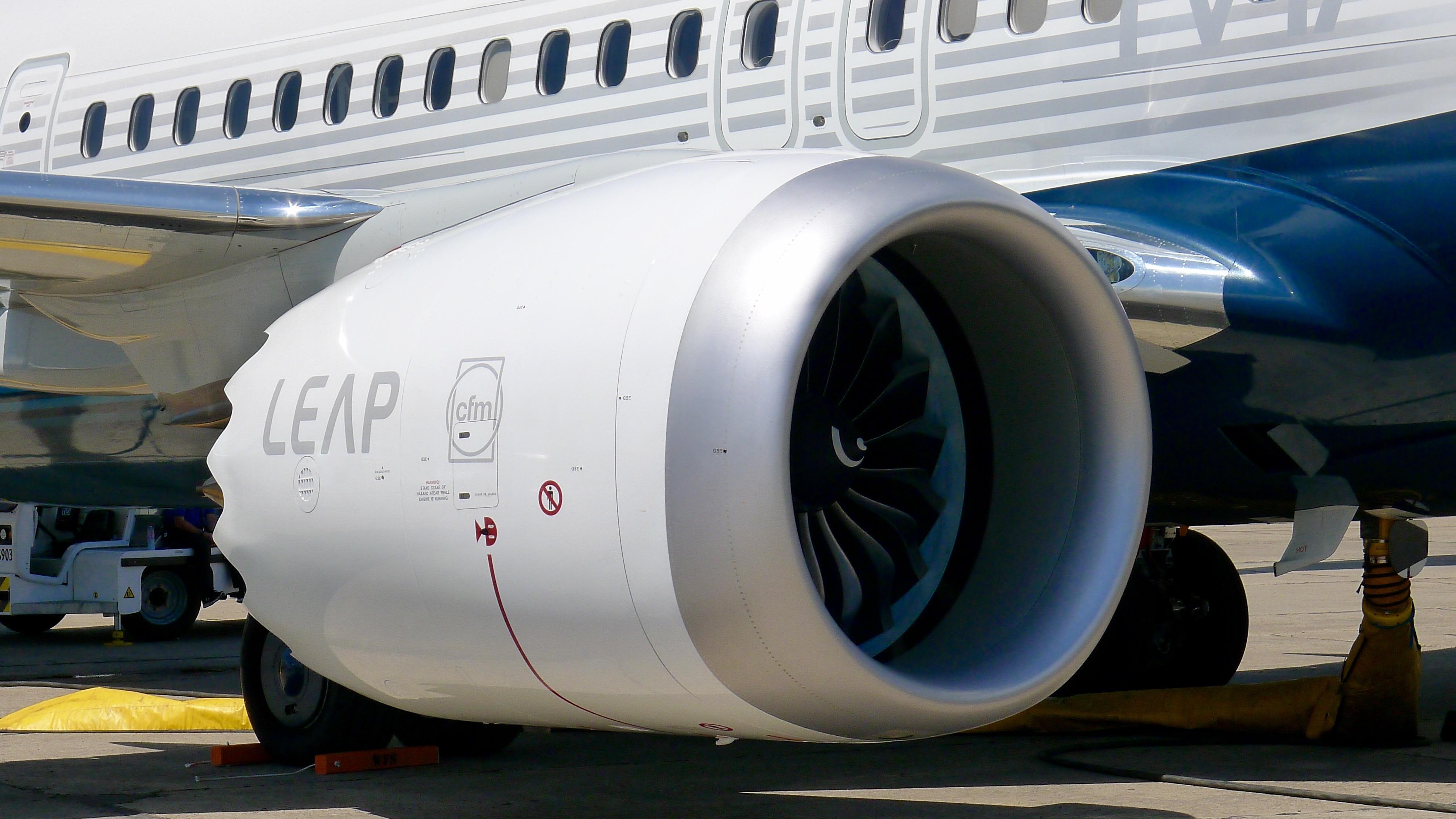737MAX飛行再開前のナセルパネル改修作業が必要になる見込み

2月26日発行のFAA耐空性改善通報(AD)案によれば、ボーイング737MAXの飛行再開前に、エンジン制御系配線の電磁干渉対策を確認する検査・改修作業が指示される見通しだ。
本件は同機の2件の死亡事故、およびそれに起因する2019年3月からの飛行停止に関するボーイング社の調査により発見されたもので、複合素材製のエンジンナセルパネルに影響するものだ。製造時、エンジン最上部に位置する一部のサムネイルフェアリングおよびミッドストラットフェアリング内で、直下にある配線をシールドするための保護用フォイル加工に隙間が残されていた。
ボーイング社は2019年12月11日付のSpecial-attention service bulletinで、運航会社に対して6ヶ月以内にこの部位を点検し、サムネイルフェアリングアッセンブリを改修することを推奨している。FAAのAD案は飛行再開前の改修を求めていることから、現段階では改修が飛行再開の必要条件になるか不透明であるにも関わらず、運航会社は飛行再開が許可される前に対応するとみられている。
このADでは、対象は737MAX全機となっている。ボーイング社の上記bulletinでは2018年2月から2019年6月にかけて製造された機体に問題があるとしており、シリアルナンバーによりその該当機を示していた。
AD案では「ナセルパネル内側の金属層(アルミ製フォイル)に対する大規模な改修作業は、この層に亀裂を生む可能性がある。」と説明している。「この金属層は、エンジン制御系配線を含む機内配線のシールドとしての役割の一部を担っている。金属層の亀裂は、その大きさと場所によっては高強度放射電磁界(HIRF)や被雷によるスプリアスを生じることがあり、これがエンジン制御装置の配線を含む機内配線に影響を及ぼす可能性がある。これによりエンジンの推力制御を失うことも考えられる。
ボーイング社はこれらを保証作業として対応している。メーカーでは、現在保管されている納入待ちの機体に対しても改修作業を行うことを計画している。
「機体のサムネイルフェアリングおよびミッドストラットフェアリングのパネルに問題を発見した運航会社は、ボーイング社から提供される新品のパネルに交換する必要がある」、「ボーイング社は運航会社に対し、複合素材製パネル上にあるサムネイルランディングアッセンブリの交換およびシール材の塗布により、必要とされる等電位化を行うことも求めている。意図したとおりの等電位化を実現するための部品は同社が提供する。我々は再稼働に向けた工程表よりも早く作業を完了できるよう、顧客と調整しているところだ。」とメーカーはコメントしている。
シアトルタイムズ誌が最初に報じたこのナセルパネル問題は、ボーイング社と規制当局が737MAXの機体設計と型式証明を再調査する中で取り上げた複数の問題のうちの1つだ。この改修作業は、飛行制御ソフトウェアの改修およびそれに関するパイロットのトレーニングといった、飛行再開前に実施される作業のリストに加えられることとなる。
飛行制御ソフトウェアの改修と訓練内容の修正についても最終的な内容は未確定だが、当局によるレビューや、2018年10月のライオンエアー610便および2019年3月のエチオピア航空302便事故調査の観点からも確定を迫られている。
この2つの事故の土台を作ったのは、失速防止システム(MCAS)による機首下げ操作に対するパイロットの反応についてのボーイング社による根拠のない仮説、そしてMCASが単一の迎え角センサーからのデータに依存している、という2つの問題だ。MCASソフトウェアの改修がボーイング社による改修作業の主軸だったが、ボーイング社が根拠のない仮説を提示したことは、事故の直接的な原因に限らない737MAXの広範囲に渡る調査をFAAが指示することにつながった。
ボーイング社が対応を進めているもうひとつの問題は、同機の燃料タンクをはじめとした安全運航に関わる重要区画内に残置された異物(FOD)の検査が挙げられる。これは定例作業中に発見され、確認が進められる中で多くの事例が見つかったことから、保管中の全機体に対して行われる。今後、同機の製造工程、特に燃料区画の製造工程は、より多くのFOD対策が採られる形で変更されると同社はコメントしている。なお、FOD検査の結果に関する最新情報の提供については拒否した。
ボーイング社は2度目の事故直後に737MAXの納入を停止し、1月からは製造を一時中止している。現在までに約800機の737MAXが製造され、387機が運航会社に、400機が納入待ちとして同社が保管している。
以上は、Sean BroderickがAviation Dailyいた記事です。Aviation Dailyは、民間航空に焦点を当てた経営幹部に重要な洞察をお伝えいたします。航空会社と空港の戦略、主要航空会社のデータスナップショット、運賃データ、および国際的なカバレッジを毎日お届けいたします。Aviation Week NetworkのAviation Dailyをもっと知りたい場合、こちらをクリックして下さい。
An FAA draft directive set for publication Feb. 26 calls for Boeing 737 MAXs to undergo inspections and modifications before further flight to ensure engine-control wiring has adequate protection from electromagnetic interference.
The issue, discovered during Boeing’s review of the MAX following two fatal accidents and the model’s March 2019 grounding, affects composite engine nacelle panels. During production, gaps were left in protective foil lining inside some thumbnail and mid-strut fairing panels, located on top of the engine, meant to shield wires located just below.
Boeing issued a special-attention service bulletin on Dec. 11, 2019 recommending that operators inspect the areas and modify the thumbnail fairing assembly within six months. The FAA’s draft airworthiness directive (AD) calls for the work to be done “before further flight,” making it likely that MAX operators will opt to tackle it before the model is cleared to fly again, even if the mandate—which other regulators are expected to adopt—is not finalized.
The FAA directive will apply to all MAXs. Boeing’s bulletin listed a subset of aircraft by serial number built from February 2018 through June 2019 that it believes have the issue.
“Excessive rework of the surface of the metallic (aluminum foil) inner layer of those panels can result in cuts to that layer,” the FAA draft rule explained. “This metallic layer functions as part of the shielding for aircraft wiring, including wiring associated with the engine control systems. Cuts to the metallic layer, depending on their size and location, could create the potential for [high intensity radiated fields] exposure or lightning attachment to induce spurious signals onto the underlying airplane wiring, including wiring associated with the engine control systems. Such spurious signals could cause a loss of engine thrust control.”
Boeing is covering all work under warranty. The manufacturer also plans to modify aircraft it has in storage awaiting delivery to customers.
“Operators who find the issue on the airplane’s thumbnail and mid-strut fairing panels will need to replace the panels with new ones provided by Boeing,” the manufacturer said. “Boeing is also asking all MAX operators to replace the thumbnail landing assemblies on the composite panels and apply a sealant to establish a required electrical bond path. Boeing will provide the parts to ensure the bond path works as intended. We are now coordinating with our customers to complete the work prior to our estimated return to service (RTS) time line.”
The nacelle panel problem, first reported by the Seattle Times, is one of several that Boeing and regulators have flagged during their reviews of the MAX’s design and certification. The nacelle-panel modification adds to a list of pre-service-return fixes that includes modified flight-control computer software and pilot training.
The software and training changes, which still must be finalized, were prompted by regulatory reviews as well as the investigation into the October 2018 crash of Lion Air Flight 610 and a still-ongoing probe of the March 2019 Ethiopian Airlines Flight 302 accident. Boeing’s erroneous assumptions about how pilots would react to uncommanded nose-down inputs by the MAX’s maneuvering characteristics augmentation system (MCAS) flight control law, and the function’s reliance on a single angle-of-attack sensor feed, set the stage for both accidents. Modifying the MCAS software is the primary focus of Boeing’s fixes, but the erroneous assumptions prompted the FAA to order an extensive evaluation of the MAX that went beyond factors linked to the accidents.
Another issue that Boeing is addressing: inspections of MAX fuel tanks and other safety-critical areas for foreign object debris (FOD). That issue surfaced during routine inspections and are being applied to the entire stored fleet after subsequent checks turned up more instances. Boeing said that its MAX production process will be changed to include more precautions to prevent FOD, particularly in fuel-cell areas. Boeing declined to provide an update on the FOD inspections’ findings.
Boeing halted MAX deliveries just after the second accident, and in January suspended MAX production. About 800 MAXs have been built, including 387 in customers’ hands and 400 that Boeing produced after it stopped deliveries.